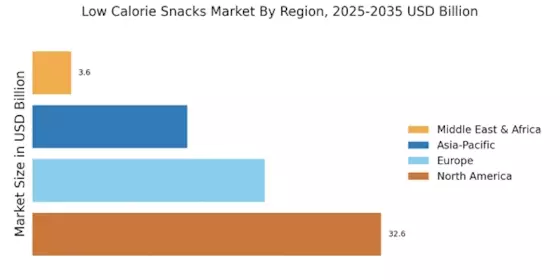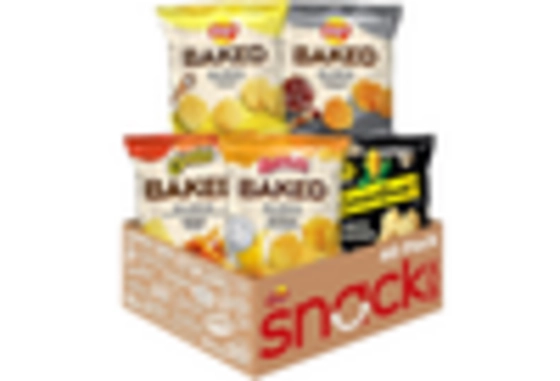Rising Health Awareness
The increasing awareness regarding health and wellness among consumers appears to be a primary driver for the Low Calorie Snacks Market. As individuals become more conscious of their dietary choices, the demand for snacks that align with healthier lifestyles is surging. Reports indicate that nearly 60% of consumers actively seek low-calorie options, reflecting a shift towards mindful eating. This trend is further supported by the growing prevalence of obesity and related health issues, prompting consumers to opt for snacks that offer lower caloric content without compromising on taste. Consequently, manufacturers are innovating to create appealing low-calorie snacks that cater to this health-conscious demographic, thereby expanding their market reach.
Innovative Product Development
Innovation in product development is a significant catalyst for the Low Calorie Snacks Market. Companies are increasingly investing in research and development to create unique snack options that are both low in calories and high in flavor. This includes the introduction of novel ingredients, such as plant-based proteins and natural sweeteners, which enhance the nutritional profile of snacks. Market data suggests that the segment of low-calorie snacks has seen a growth rate of approximately 8% annually, driven by these innovations. Furthermore, the introduction of diverse flavors and textures is attracting a broader consumer base, including those who may not typically consider low-calorie options. As a result, the market is witnessing a proliferation of products that cater to various taste preferences, thereby enhancing consumer engagement.
Growing Demand for Convenience Foods
The growing demand for convenience foods is significantly influencing the Low Calorie Snacks Market. As lifestyles become increasingly hectic, consumers are seeking quick and easy snack options that do not compromise their health goals. Low-calorie snacks, which often come in portable packaging, are well-positioned to meet this demand. Market analysis reveals that the convenience snack segment is projected to grow at a rate of 7% annually, driven by busy professionals and on-the-go consumers. This trend is prompting manufacturers to develop snacks that are not only low in calories but also easy to consume, such as single-serving packs and ready-to-eat options. Consequently, the market is adapting to these consumer preferences, leading to a proliferation of convenient low-calorie snack products.
Influence of Social Media and Marketing
The influence of social media and targeted marketing strategies is emerging as a pivotal driver for the Low Calorie Snacks Market. Brands are leveraging social media platforms to engage with health-conscious consumers, promoting their low-calorie offerings through visually appealing content and influencer partnerships. This approach appears to resonate well with younger demographics, who are increasingly influenced by online trends and peer recommendations. Data suggests that brands utilizing social media marketing have experienced a sales increase of up to 25% in the low-calorie snack segment. Additionally, interactive campaigns and user-generated content are fostering a sense of community among consumers, encouraging them to share their experiences with low-calorie snacks. As social media continues to shape consumer behavior, its impact on the market is likely to grow.
Increased Availability of Retail Channels
The expansion of retail channels is playing a crucial role in the growth of the Low Calorie Snacks Market. With the rise of e-commerce and the diversification of retail formats, consumers now have greater access to a variety of low-calorie snack options. Data indicates that online sales of snacks have increased by over 30% in recent years, reflecting a shift in shopping habits. Retailers are also dedicating more shelf space to health-oriented products, making it easier for consumers to find low-calorie alternatives. This increased availability not only enhances consumer convenience but also encourages trial and adoption of low-calorie snacks. As more retailers recognize the demand for healthier snack options, the market is likely to continue expanding, providing consumers with a wider array of choices.


















Leave a Comment